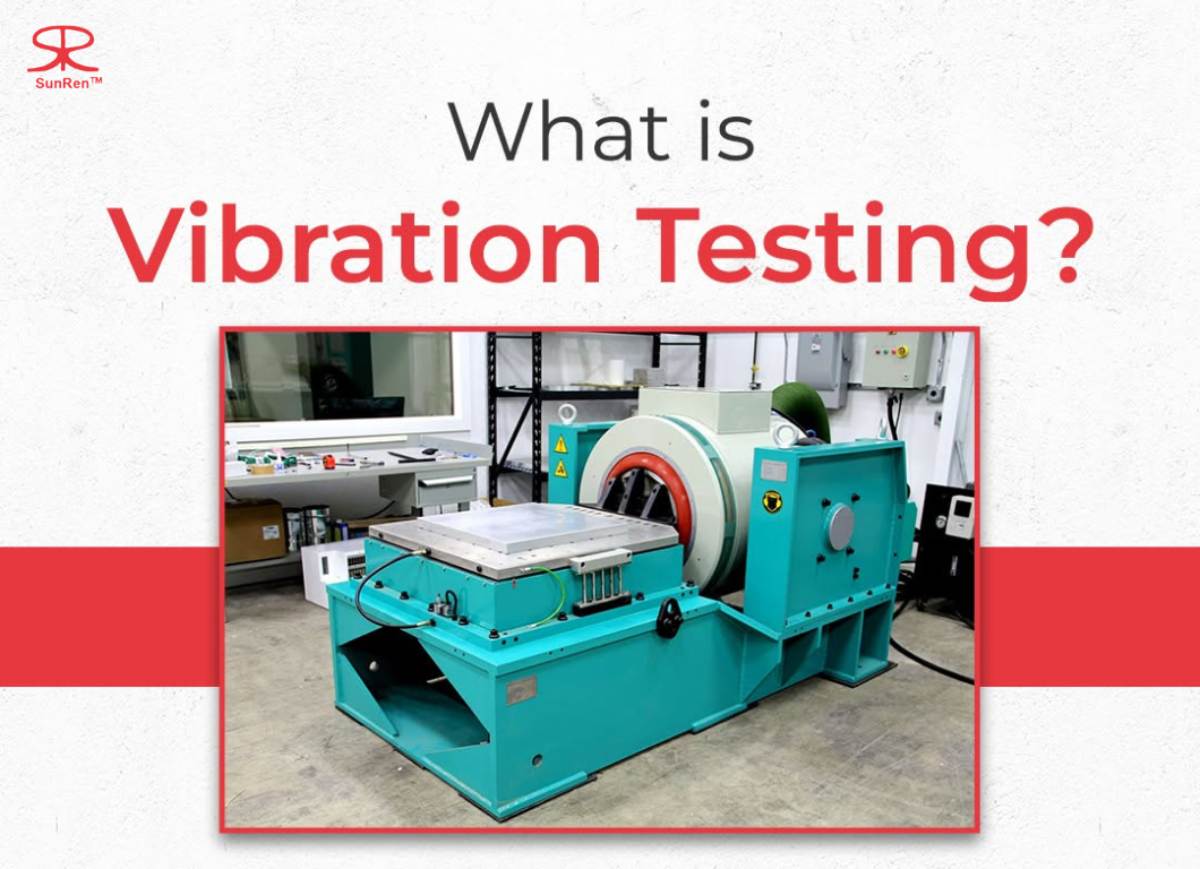Vibration test is a crucial process when developing vehicles, it helps to evaluate the effect of the product on long-term shock and vibration.
Through this testing, we can uncover potential flaws, gauge product robustness, and determine its ability to perform consistently over time in a realistic setting.
These tests replicate real-world conditions, allowing engineers to detect structural flaws, optimize materials, and enhance overall vehicle safety.
As quality assurance takes center stage, vibration testing has emerged as a crucial component in the automotive manufacturing process.
This article delves into the methodologies, advantages, and real-world uses of vibration testing within the automotive sector.
What is a Vibration Test?

The vibration test revolves around the controlled vibration of a vehicle to replicate its longevity in real-world conditions.
With vibration testing, we can check the reliability, durability, and performance of automobiles in various environmental conditions.
The automobile industry heavily relies on vibration tests to see how automobile components react to dynamic forces. It mimics the condition through controlled vibrations, to evaluate a car’s ability to withstand difficult road conditions.
The vibration test process informs the durability, reliability, and performance evaluation of a car. Ultimately, vibration testing plays a crucial role in ensuring the safety, comfort, and longevity of vehicles before market release.
View this post on Instagram
Methods of Vibration Testing
Vibration testing employs diverse methodologies to cater to distinct industries.
1. Sinusoidal (Sine) Vibration Test
Sine Vibration Testing exposes a product to vibrations of a single frequency or a range of frequencies. This allows technicians to utilize a search and dwell technique, sweeping a range of frequencies to pinpoint a sample’s unique resonance frequency.
It is where vibrations intensify as they resonate through a uniform material, amplifying amplitudes beyond other frequencies.
Purpose: Identifies natural frequencies of components and detects resonance issues.
Application: Used in engine mounts, suspension systems, and chassis testing.
2. Random Vibration Test
Random Vibration Testing helps to create unpredictable vibrations to replicate or mimic real-world conditions. It fabricates transport movements, vehicle operations, and all kinds of vibrations.
To perform this testing, a range of frequencies and intensities is set first that gets applied to the sample.
Purpose: Evaluate durability under realistic operating conditions.
Application: Used for testing electronic systems, dashboard components, and vehicle frames.
3. Shock Vibration Test
Shock Vibration Testing is done to check how a vehicle will react to sudden shocks like drops, accidents, or falls. It helps in testing fragile components like screens, window glass, and sensors.
Purpose: Tests the ability of components to withstand sudden forces.
Application: Commonly used for airbag systems, braking systems, and structural integrity tests.
4. Environmental Vibration Test
This testing approach evaluates how temperature, humidity, and other environmental stressors interact with vibration to affect vehicle components. By doing so, it verifies their ability to function optimally in harsh conditions.
- Purpose: Simulates environmental stress on automotive parts.
- Application: Used in testing batteries, electronic control units (ECUs), and infotainment systems.
Benefits of Vibration Test
1. Ensures Product Durability: It helps in testing the manufacturer’s weak points and ways to improve the strength of the product which ensures durability and reliability.
2. Reduces Failure Risks: Identifying the defects helps companies to prevent accidents or car failures which can lead to risks in customer’s life. It helps in maintaining brand reputation.
3. Improves Safety: Ensuring no mechanical stress can harm the product which helps to build trust and safety of the vehicles.
4. Ensures Compliance with Industry Standards: Strict vibration testing protocols, governed by MIL-STD, ISO, and ASTM standards, are mandatory for several industries to ensure compliance with quality and safety norms.
5. Better Ride Comfort: Excessive vibrations can compromise passenger comfort. To address this, manufacturers can refine suspension systems, seat designs, and steering components to create a smoother ride experience.
6. Cost Savings on Repairs and Recalls: Warranty claims and expensive repairs are also prevented, and doing so also minimizes maintenance costs for consumers.
7. Optimization of Materials and Design: A vibration test is important to understanding how automobile materials behave under several conditions. It also helps in weight reduction, fuel efficiency, and better vehicle performance.
8. Protection of Electronic Components: The complex electronic architecture of modern vehicles comprises numerous critical components, including sensors, control units, and multimedia systems.
By conducting vibration testing, manufacturers can ensure that these systems perform consistently and reliably in diverse driving conditions.
Applications of Vibration Test in Automobiles
Vibration testing is a vital tool across multiple sectors of the automotive industry, guaranteeing vehicles operate efficiently and safely in varied environmental conditions. Notable applications of vibration testing encompass:
1. Engine and Transmission Testing: Testing vibration in engines and transmissions as it can impact the car’s lifespan and effectiveness. A vibration test allows us to evaluate the components, identify problems, and refine their performance.
2. Suspension and Chassis Testing: The suspension and chassis are treated with difficult road conditions and necessary design and testing. A vibration test allows the marking of those components and enhances the vehicle’s overall stability.
3. Interior and Dashboard Component Testing: dashboards, seats, and control panels are some of the interior components that are checked if capable of vibration on roads. This test verifies the stability of the components.
4. Tire and Wheel Testing: Tires and wheels are directly connected to road surfaces and the speed of the car so testing them is a necessity. It helps in verifying the balance, structure, and overall performance in diverse conditions.
5. Brake System Evaluation: The brake system is vital during emergency stops. The vibration testing helps to check the failure in brake systems such as discs or pads. It is important to ensure the safety of the customers.
6. Electric Vehicle (EV) Component Testing: The adoption of electric vehicles is growing which includes battery packs, charging infrastructure, and electric motors which is important to evaluate through vibration testing.
Conclusion
You May Like Also: The Evolution of Telecom Testing: From Analog To Digital To 5G
Frequently Asked Questions (FAQ)
Here are some frequently asked questions about vibration testing:
What is vibration in automotive?
Vibration in an automobile is the frequent swinging that occurs through the steering wheel, seat, armrests, floor and pedals at different speeds.
How to check car vibration?
Vibration in the car can be checked by inspecting the tires, wheels, engine, or suspension
How can I measure vibration?
An accelerometer is a device to senses the vibration level, it is a typical vibration measurement system.




1 thought on “What is Vibration Test? Methods, Benefits, and Applications”